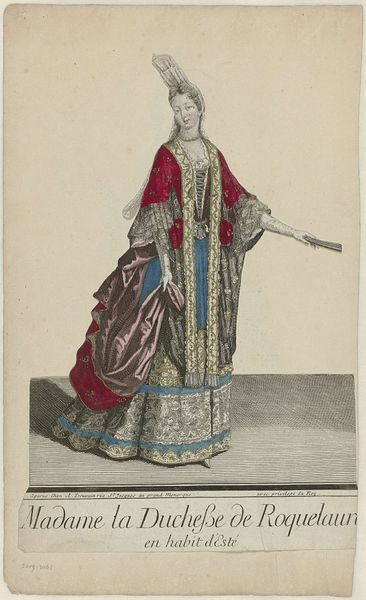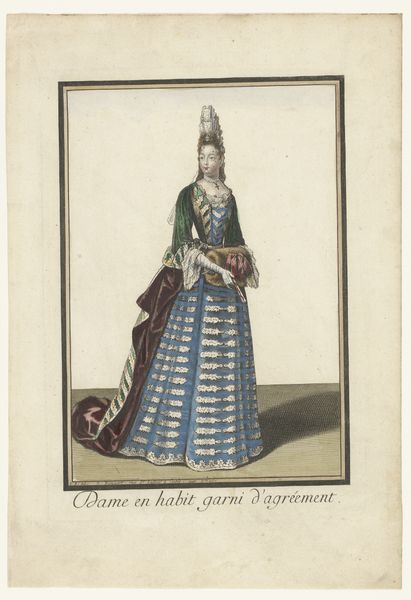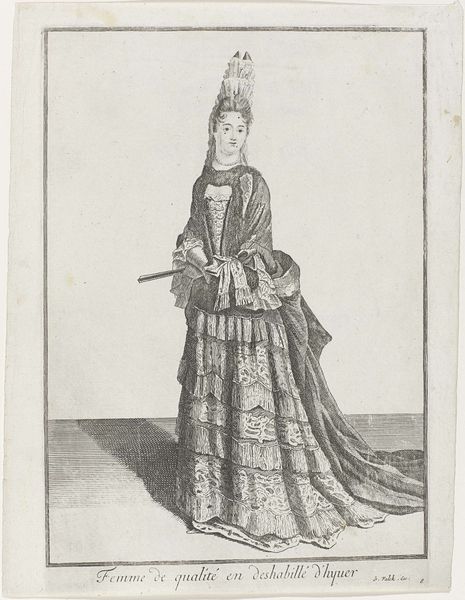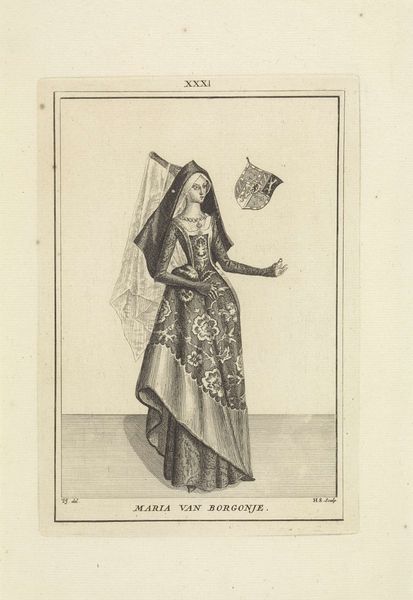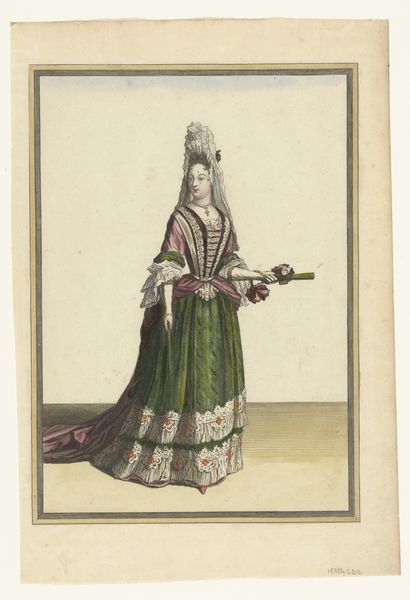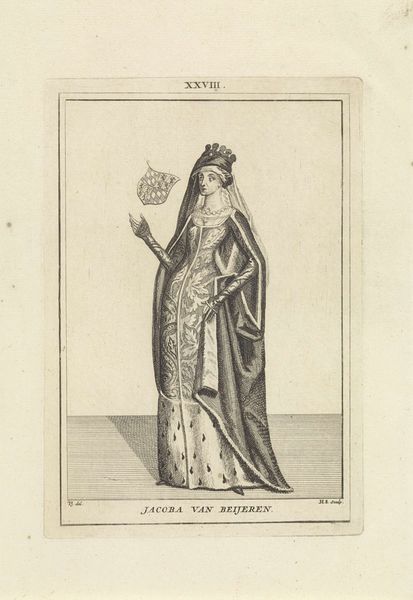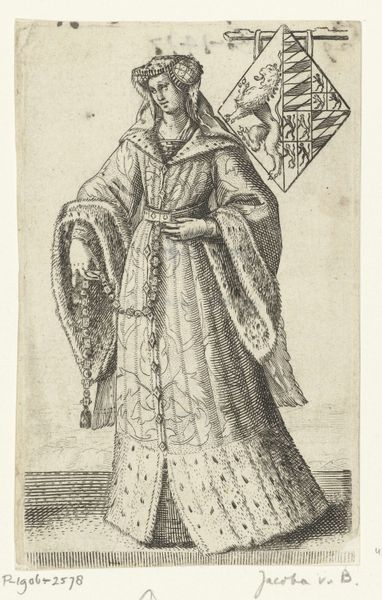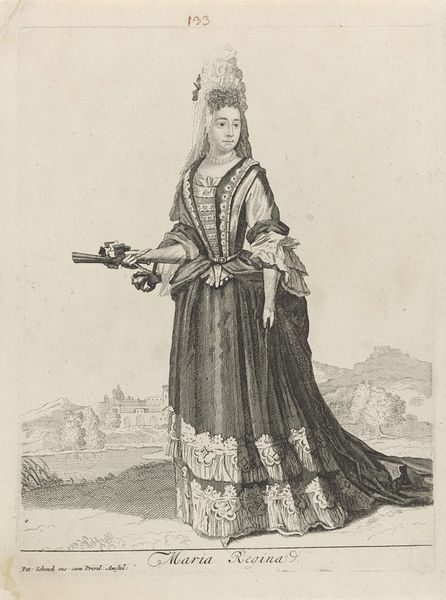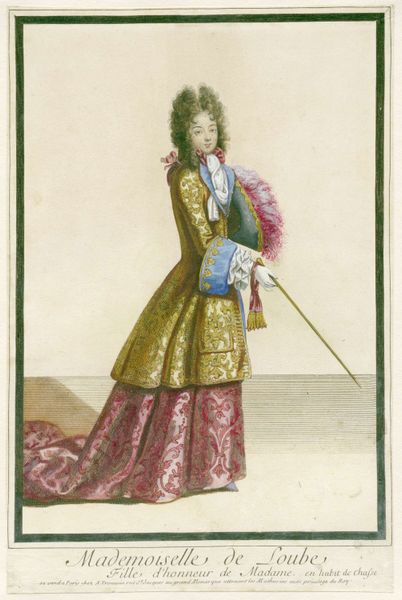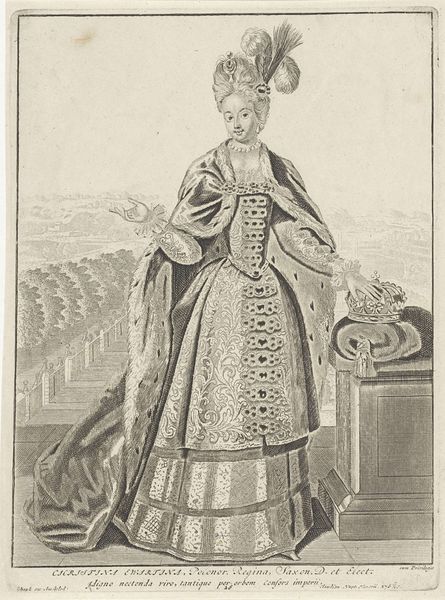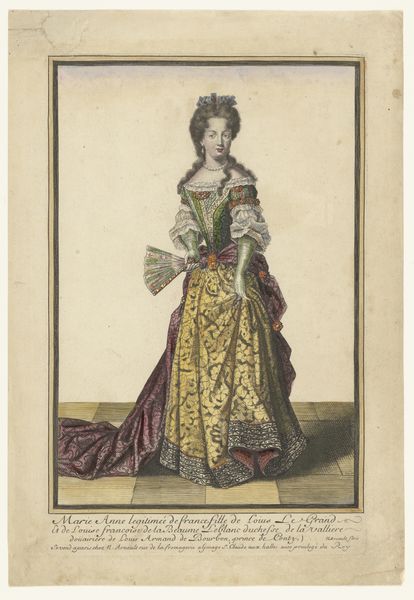
drawing, coloured-pencil, paper, ink
#
portrait
#
drawing
#
coloured-pencil
#
baroque
#
paper
#
ink
#
coloured pencil
#
watercolour illustration
#
genre-painting
Dimensions: height 321 mm, width 193 mm
Copyright: Rijks Museum: Open Domain
Editor: This is Antoine Trouvain’s “Madame la Marquise de Polignac, een maskertje in de hand,” made in 1694, using ink, coloured pencil and paper. I’m struck by how this piece portrays wealth and status through incredibly detailed rendering of clothing and accessories. What's the historical context of such portraiture? Curator: That's an astute observation. In late 17th century France, images like these weren’t merely about likeness; they were powerful statements of social standing. Consider the setting: images of the aristocracy functioned as public relations, influencing how individuals and families were perceived and integrated into the intricate hierarchies of the court and the nation. This was art functioning as social currency. Editor: Social currency…so her very image had value? Curator: Precisely. Look at the print's creation; it's a drawing intended for wider dissemination, indicating its purpose went beyond private appreciation. The exaggerated height of her Fontange hairstyle, the richness of her gown – these were meticulously crafted visual cues dictating place within the societal landscape. The Rijksmuseum now houses this artwork, how do you think it shifts the context? Editor: Right. Because it has entered the public domain and museum space. I now wonder about Trouvain as the artist: what were his incentives, who did he want to reach, what was his situation? I think I had focused too much on the depicted person! Curator: Good question! Examining Trouvain’s role, and the patronage system supporting artists is vital for understanding the power dynamics at play, who has the power of the pen – literally and figuratively! Considering that allows a richer appreciation, not just of this image, but of art’s role in reflecting and shaping its social environment. Editor: I see, thinking about art as a participant in social power and image management changes everything.
Comments
No comments
Be the first to comment and join the conversation on the ultimate creative platform.
